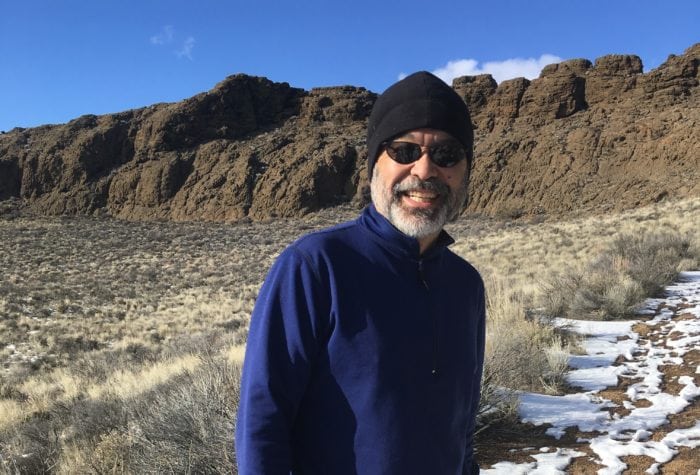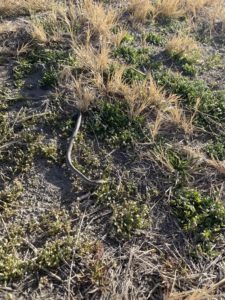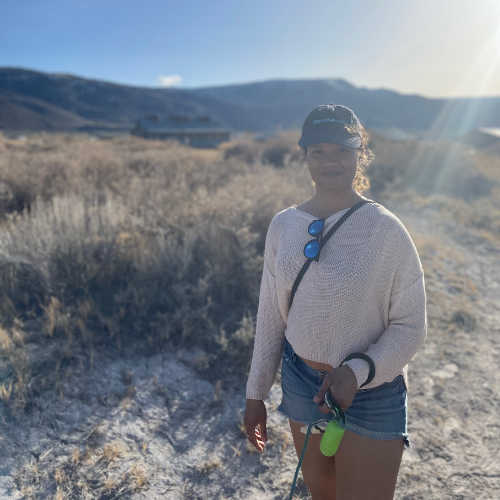Author: Medina Glenn | Published: June 16, 2022 | Category: My Desert Adventure
We were in an impressionable state of mind, as we drove south on Highway 31 toward Summer Lake Hot Springs this past March. I work in healthcare, and being in nature helps me heal and decompress. Something about the desert continues to call me over and over again. My partner Katie, a carpenter, is also an avid outdoors lover, and together we enjoy road trips and exploring all parts of the Pacific Northwest, and especially the desert.
As we left the hustle of Bend, we watched the change from verdant pastures and ponderosa pines to a nearly treeless expanse under a bright blue heaven. The weather was perfect; sunny and 60s with a breeze. A small group of pronghorn antelope grazed casually near an old farmhouse; their pretty tan patterns and perked ears caught our eyes as we drove past. Winter Ridge, dappled with snow, towered over the Summer Lake basin as we continued down the highway closer to the wildlife refuge. We hoped that we would see other wildlife, although we became unsure of that when we saw what drought and extensive water usage had done to the land.

 Once parking our truck near our camp spot, we decided to walk to the 15-mile-long alkali lake bed. As we approached the path, a juvenile Western rattlesnake slid past us carefully. Our dogs were curious, but we kept them away from the reptile, allowing it to pass through. The rattlesnake was a good reminder to stay watchful as we walked toward the lake bed.
Once parking our truck near our camp spot, we decided to walk to the 15-mile-long alkali lake bed. As we approached the path, a juvenile Western rattlesnake slid past us carefully. Our dogs were curious, but we kept them away from the reptile, allowing it to pass through. The rattlesnake was a good reminder to stay watchful as we walked toward the lake bed.